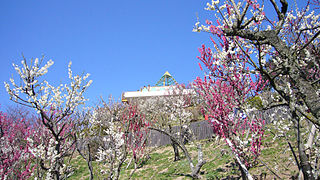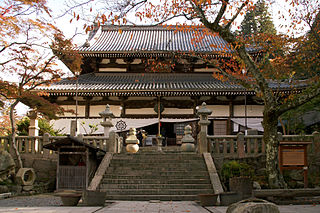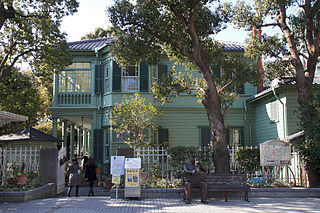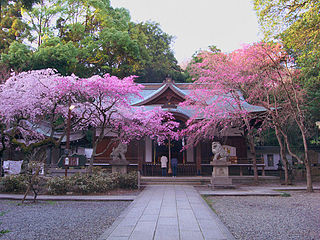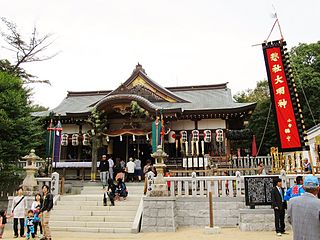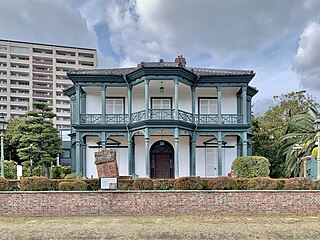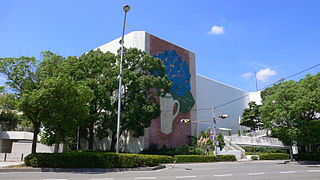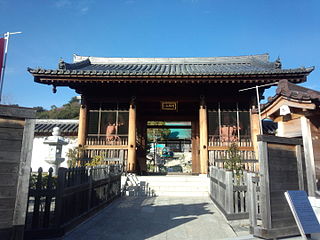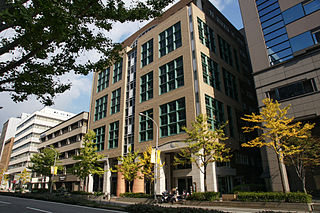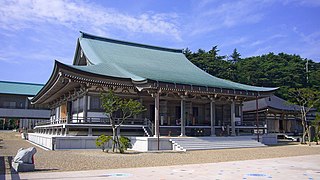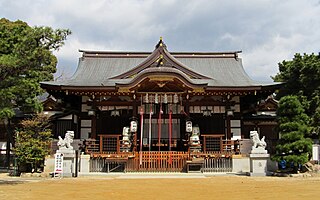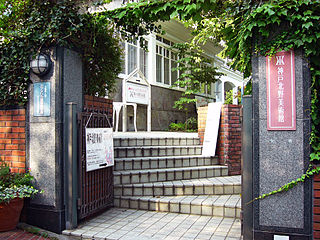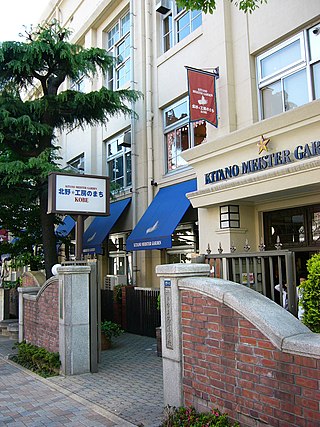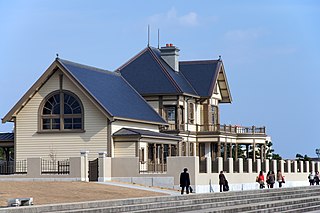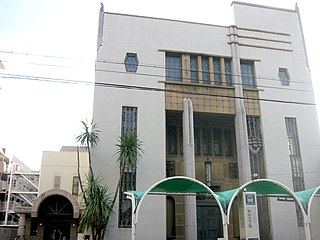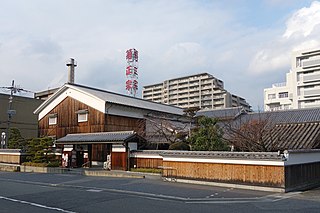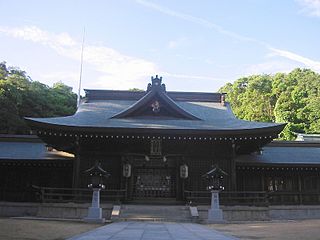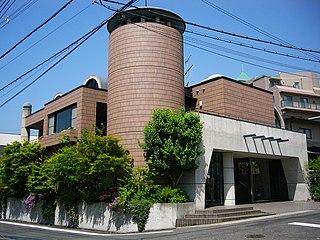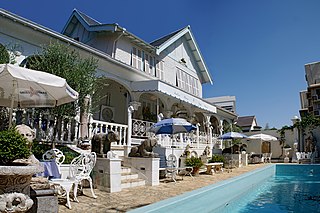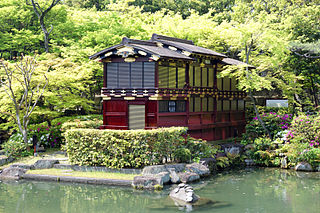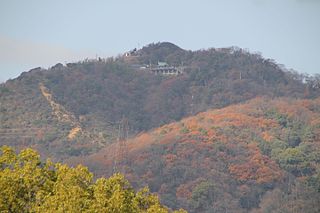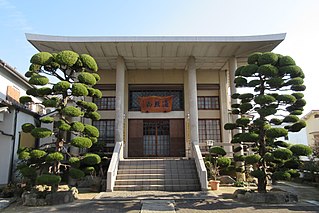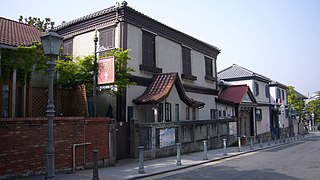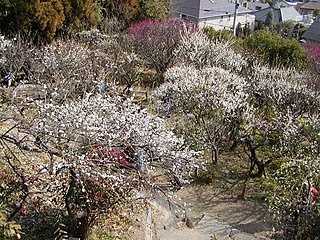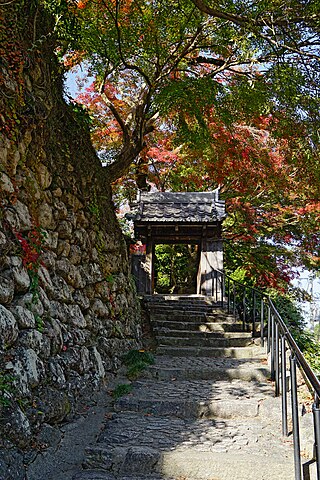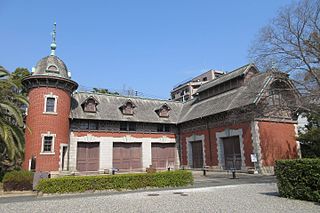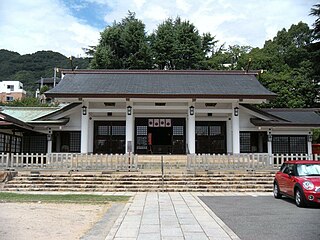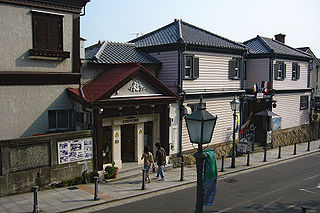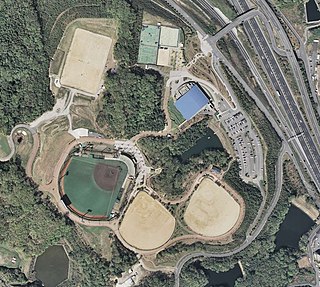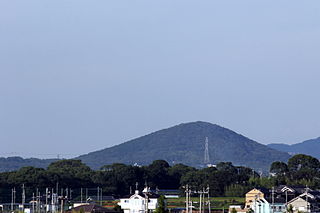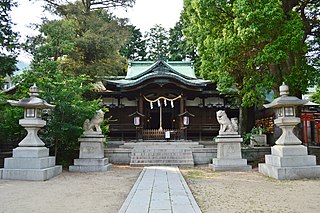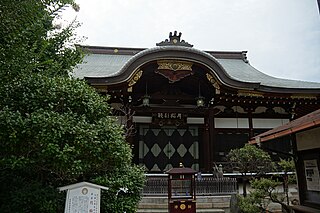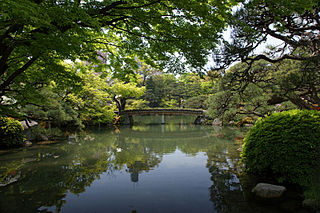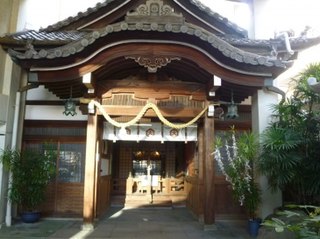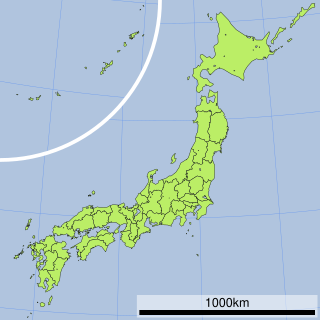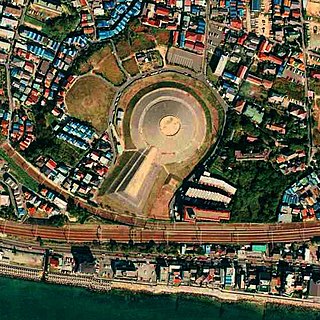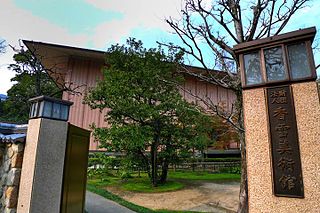56 Sights in Kobe, Japan (with Map and Images)
Legend
Premium Sights
Book tickets, guided tours and activities in Kobe.
Guided Free Walking Tours
Book free guided walking tours in Kobe.
Welcome to your journey through the most beautiful sights in Kobe, Japan! Whether you want to discover the city's historical treasures or experience its modern highlights, you'll find everything your heart desires here. Be inspired by our selection and plan your unforgettable adventure in Kobe. Dive into the diversity of this fascinating city and discover everything it has to offer.
Sightseeing Tours in KobeActivities in KobeThe Kobe Port Tower is a landmark in the port city of Kobe, Japan. The sightseeing tower was completed in 1963 and was temporarily closed from late 2009 to 28 April 2010 and again to present for renovation. It is located in Chuo-ku, Kobe, Hyogo Prefecture, Japan.
Meriken Park is a waterfront park located in the port city of Kobe, Hyōgo Prefecture, Japan. The park features the Kobe Port Tower, Kobe Maritime Museum, and a memorial to victims of the Great Hanshin earthquake. The name of the park comes from the word "American," which was commonly translated as "Meriken" during the Meiji era. Meriken Park is also the location of the Hotel Okura Kobe and Kobe Meriken Park Oriental Hotel.
3. D51 211
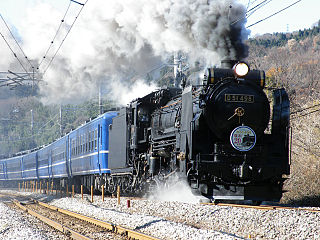
The Class D51 (D51形) is a type of 2-8-2 steam locomotive built by the Japanese Government Railways (JGR), the Japanese National Railways (JNR), and Kawasaki Heavy Industries Rolling Stock Company, Kisha Seizo, Hitachi, Nippon Sharyo, Mitsubishi, and Mitsubishi Heavy Industries from 1936 to 1945 and 1950 to 1951. 174 units are in preservation in Japan, including five operational examples. A further 13 are preserved in Russia and Taiwan, bringing the total number of preserved units to 187.
4. 摩耶観光ホテル跡
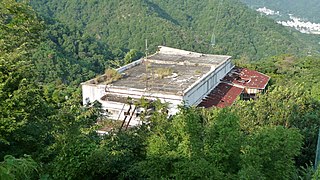
Maya Kanko Hotel (Maya Kanko Hotel) is a hotel that used to operate on the slopes of Mt. Maya in Nada Ward, Kobe City, Hyogo Prefecture. It was completed in 1930 and closed in the 1990s. After that, it was ruined, but its value as a modernist building was evaluated, and it was decided to register it as a national tangible cultural property, which is rare in ruins.
5. 第4代兵庫県知事陸奥宗光公を讃える石碑
Count Mutsu Munemitsu was a Japanese diplomat and politician. He became Minister of Foreign Affairs in 1890 and worked to revise unequal treaties. He served as plenipotentiary at the peace conference in Shimonoseki after the First Sino-Japanese War.
6. Sumadera Temple
Sumadera is a temple of the Shingon sect located in Sumadera-cho, Suma Ward, Kobe City, Hyogo Prefecture. Its mountain name is Jōyasan. The main deity is Shōkannon. It is the 24th temple of the New Saigoku Thirty-three Kannon Pilgrimage. Its official name is Fukushōji.
7. World Memorial Hall
World Memorial Hall or World Hall is a multi-purpose arena located in the Chūō-ku Ward of Kobe, Japan. It has a maximum capacity of 8,000 people and is optimized for large-scale meetings, sport events, trade shows and concerts. It is located on the artificial island of Port Island, along with numerous convention centers, hotels and universities.
8. Kobe East Park
Higashi Yuenchi is an urban park managed by the city of Kobe located at 6-chome, Kano-cho, Chuo-ku, Kobe City, Hyogo Prefecture. It is located south of the main building of Kobe City Hall and on the west side of Flower Road.
9. Kobe Muslim Mosque
Kobe Mosque , also known as Kobe Muslim Masjid , was founded in October 1935 in Kobe and is Japan's first mosque. It is situated in the Hyōgo Prefecture city of Kobe. Established in October 1935, it holds historical significance as a symbol of the early presence of Islam in Japan. Its construction was funded by donations collected by the Islamic Committee of Kobe from 1928 until its opening in 1935. The mosque was confiscated by the Imperial Japanese Navy in 1943, survived airaids in n 1945, and withstood the Great Hanshin earthquake of 1995. It is located in the Kitano-cho foreign district of Kobe, one of the city's best-known tourist areas which features many old western style buildings.
10. Weathercock House
The Kobe City Weathercock House is a historical building located in Kitano-cho 3-chome, Chuo-ku, Kobe City, Hyogo Prefecture. Built in 1904 (Meiji 37) as a residence for German traders, it is a foreign building (Western-style building) and features a heavy brick exterior and a weather vane on the roof. It is called the weathercock house because of the weather vane, and it is also called the former Thomas House and the former Thomas House from the name of the original residents. It has been designated as an important cultural property of Japan.
11. Sun Yat-sen Memorial Hall
The Sun Yat-sen Memorial Museum is a museum located in Maiko Park in Tarumi Ward, Kobe City, Hyogo Prefecture. Formerly known as Sun Yat-sen Memorial Hall. The octagonal Chinese-style pavilion "Transitional Pavilion" is the oldest surviving concrete block building in Japan, built in 1915, and has been designated as an important cultural property of Japan.
12. Maya San
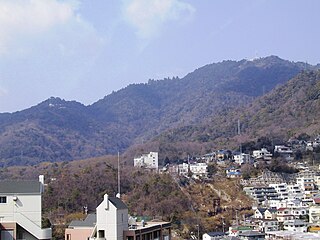
Mount Maya is a 698.6-metre-high (2,292 ft) mountain in Kobe, Hyōgo Prefecture, Japan. This mountain is one of the major peaks of the Rokkō Mountains, and is the most popular peak for visitors on the West-Rokkō Mountains.
13. 徳光院
Tokuko-in or Tokukozen-in is a Buddhist temple located in the town of Katsuai, Chuo-ku, Kobe, Hyogo Prefecture, Japan. The name of the mountain is Mt. Daimaru, the Tenryuji sect of the Rinzai sect. The main Buddha is the eleven-sided Kansei Tone Bodhisattva.
14. 三宮神社
Sannomiya Shrine is a shrine located in Sannomiya-cho, Chuo-ku, Kobe, Hyogo Prefecture. It is the third pillar of the shrines from Ichinomiya to Hachinomiya (Ikuta Shrine Eight Shrines) that enshrine the eight pillars of Ikuta Shrine, and enshrines the life of Takitsuhime as a deity.
15. 倚松庵
Ishoan is a historical building located in Higashinada Ward, Kobe City, Hyogo Prefecture. Former residence of writer Junichiro Tanizaki. It is also called "The House of 'Thin Snow'" after the representative work written here. The name is named after his wife's name, Matsuko.
16. Kobe Overseas Chinese History Museum
The Kobe Museum of Overseas Chinese History is a private humanities museum founded in 1979 located in Kaigandori, Chuo-ku, Kobe City, Hyogo Prefecture. In 1980, it was designated as one of the "100 Best Hyogo Culture" by the Kobe Shimbun in Hyogo Prefecture.
17. 本願寺神戸別院 (モダン寺)
Honganji Kobe Betsuin is a temple of the Jodo Shinshu Honganji sect located in Shimoyamate-dori, Chuo-ku, Kobe, Hyogo Prefecture, Japan. It is a separate temple directly under the Nishi Honganji Temple (Kyoto City) of the main temple of the same school. It is also nicknamed "Modern Temple".
18. Sumaura Sanjo Yuen Park
Sumaurayama Park is a lush green park that includes a botanical garden and amusement park, located in the Sumaura Park area on the summit of Mount Hachibuse and Mount Hataburi in Suma Ward, Kobe City, Hyogo Prefecture. It was operated by the subsidiary "Sumaurayuen Co., Ltd." of Sanyo Electric Railway, but became directly managed by Sanyo Electric Railway from December 1, 2019.
19. Onsen-ji
Onsenji Temple is a temple of the Yellow Wood sect located in Arima-cho, Kita-ku, Kobe, Hyogo Prefecture. The name of the mountain is Mt. Arima. The honzon is Yakushi Nyorai. The sect was originally Shingon Buddhism. The official name is Arimayama Onsen Zen Temple.
20. Moegi House
The former Sharp House is a foreign house located in Kitano-cho, Chuo-ku, Kobe City, Hyogo Prefecture. It is also known as the "House of Moe Huang". It was designated as an important cultural property of Japan on December 18, 1980.
21. 保久良神社
Hokura Shrine (Hokura Jinja) is a shrine located on Mt. Hokura (on the slopes of Mt. Kintori) in Motoyama-cho, Higashi-nada-ku, Kobe, Hyogo Prefecture. It is a Shikiuchi company, and the former company name is Gosha.
22. 伊川谷惣社神社
Ikawadani Sosha is a shrine located in Kamiwaki, Ikawadani Town, Nishi-ku, Kobe City, Hyogo Prefecture. One of the shrines that is compared to the Mononobe Shrine in the Enki Shiki Shrine Name Book. The former company name is Gosha. It is also called Soja Shrine.
23. 旧ハッサム住宅
Former Hassam House is a foreign museum located in Chuo-ku, Kobe City, Hyogo Prefecture. It is said to have been designed by A.N. Hansell, who worked on a number of foreign houses such as the Shweke House and the Gate House. Construction was completed in 1902. The south veranda, which overlooks the vast Japan garden, is an arcade-style on the first floor and a colonnade style on the second floor, which is a feature of the exterior of the house. It is highly regarded as a masterpiece of architecture that conveys the characteristics of the Meiji-era foreign museum, and was designated as an important cultural property of Japan on June 7, 1961.
24. 神戸文化ホール
Kobe Culture Hall is a music and theater hall located in Okurayama Park in Chuo-ku, Kobe City, Hyogo Prefecture. Home of the Kobe Philharmonic. It opened on April 1, 1973 with the aim of improving the culture of the region. There is a large hall and a medium hall.
25. 多聞寺
Tamonji is a temple of Tendai sect located in Tadamadai, Tarumi -ku, Kobe City, Hyogo Prefecture. The mountain name is Kichijoyama. The principal is Bishamonten. Benten Pond's music bridges and oyster flags are counted as one of the famous places of Kobehana.
26. KOBEとんぼ玉ミュージアム
The KOBE Tonbodama Museum (Kobe Tonbodama Museum) is an art museum dedicated to lampwork glass crafts such as lampwork, including lampwork such as dragonfly beads. It is located in a former settlement in Kobe City, Hyogo Prefecture.
27. Touri Tenjo-ji
Tōri Tenjō-ji (忉利天上寺), officially Mayazan Tenjō-ji (仏母摩耶山天上寺) or Mayazan Tenjō-ji (摩耶山天上寺), is a Shingon Buddhist temple in eastern Kobe, Hyōgo Prefecture, Japan. The temple is located on Mount Maya in the Nada ward of Kobe.
28. Motosumiyoshi Shrine
Moto-Sumiyoshi Shrine is a Japanese Shinto shrine in Higashinada ward, Kobe. It is one of the biggest shrines in western Kobe. It is next to Sumiyoshi Station. The shrine has existed since the 13th century.
29. Kobe Kitano Museum
The Kobe Kitano Museum of Art is an art museum located in Chuo-ku, Kobe, Hyogo Prefecture. The former U.S. Consulate official building built in Meiji 31 (1898), which is a historical building, is used as a facility.
30. Kitano Meister Garden
Kitano Kobo no Machi is an "experiential workshop to encounter the Kobe brand" located in Chuo Ward, Kobe City. It closed on December 28, 2023. The building where the facility used to be is currently closed, and the new facility is scheduled to open after renovation due to the change of management company. The following is information at the time of business.
31. Former Residence of Saji Muto
The former Muto Family Residence Western-style building is a Western-style building located in Tarumi Ward, Kobe City, Hyogo Prefecture. It is also known as the former Muto Yamaji Residence and the former Kanebo Maiko Club.
32. 神戸市文書館
The Kobe City Archives is the archive of the city of Kobe in Japan. The building containing the archive is currently located in the Chuo district of Kobe, near Shin-Kobe Station. The building is in Art Deco style, and was recognised as a "significant building" in 2000.
33. Kiku-Masamune Sake Brewery Museum
The Kikumasamune Sake Brewery Memorial Hall is located in Higashinada Ward, Kobe City, Hyogo Prefecture, and it is a memorial hall for Kikumasamune Sake Brewery, showcasing 566 items of sake brewing materials designated as important tangible folk cultural properties of the country.
34. 多井畑厄除八幡宮
Tai no Hata Yaku Yoke Hachimangu is a shrine located in Taihata, Sumaku, Kobe City, Hyogo Prefecture. Commonly known as Taihata Yakujin, it is the oldest spiritual site for warding off misfortune in Japan.
35. 世良美術館
The Sera Museum of Art is an art museum opened by the female painter Shine Sera, who studied under Ryohei Koiso, a leading Western-style painter of the Showa era. It has been announced that it will close in March 2025.
36. Italian House & Decorative Arts Museum
The Italian Pavilion and Platonic Museum of Decorative Arts is a historical building and art museum located in Kitano-cho, Chuo-ku, Kobe, Hyogo Prefecture. It was opened to the public in 1991. Also with the former Avoy House. A traditional building in the Kitano and Yamamoto districts.
37. Funa-Yakata Pleasure Barge
The Funayakata is a historical building known as the "Kawa-gozabune" located in Sorakuen, Chuo Ward, Kobe City, Hyogo Prefecture. A gozabune refers to the boats used by feudal lords during the Edo period for official duties and leisure, and only a few have survived to this day. Among them, this Funayakata is the only existing Kawa-gozabune, and due to its rarity and high historical and cultural value, it was designated as an Important Cultural Property of the country in 1953.
38. Mt. Takatori
Mt. Takatori is a mountain that exists in the boundaries of Suma Ward and Nagata Ward, Kobe City, Hyogo Prefecture. Altitude 328 m. It seems to be called "Takatoriyama", but the locals call it "Takatori-san". It is located on the west side of the Rokko Mountains and is one of the Rokko All-Mountain Routes.
39. 市章山
Shishozan is a mountain located in the western part of the Rokko Mountains, in Chuo Ward, Kobe City. The illumination at the southern foot in the shape of the Kobe City emblem is famous, and it has become a landmark of Kobe along with the anchor-shaped illumination of Anchor Mountain to the west.
40. 聖徳院
Shōtoku-in is a temple located in Chūō-ku, Kobe City. It is a preparatory sect of the Kōyasan Shingon sect. Main deity: Kōbō Daishi. Side deity: Fudō Myōō. Side deity: Aizen Myōō (opened in spring of 2001).
41. Ben's House
Ben's House is a historical building facing Kitano Street in Kitano-cho, Chuo-ku, Kobe City, Hyogo Prefecture. It is one of the Western-style buildings that make up the Important Traditional Buildings Preservation District "Kitano-cho Yamamoto-dori" and has been selected as one of the "100 Modern Houses in Hyogo". Also with the former Ferré House.
42. 岡本梅林公園
Okamoto Plum Forest Park is a park located in Higashinada Ward, Kobe, Hyogo Prefecture, Japan. In addition, there is also a separate plum forest appreciation area called "Hokura Plum Forest" in the same area.
43. Zenfuku-ji
Zenpukuji Temple is a Buddhist temple belonging to the Soto sect located in Kita-ku, Kobe, Hyogo Prefecture. The name of the mountain is Kotokusan. The honzon is Amitabha. It is located at the foot of the deciduous mountains in Arima Onsen Township.
44. 旧小寺家厩舎
The former Kodera family stable is a Western-style stable building located in Sorakuen Gardens in Chuo-ku, Kobe City, Hyogo Prefecture. It was designed by architect Kozo Kawai and completed in 1910. It was designated as an important cultural property of Japan in 1970.
45. 神戸護国神社
Hyogo Kobe Gokoku Shrine is a shrine (Gokoku Shrine) located in Shinohara Kitamachi, Nada-ku, Kobe, Hyogo Prefecture, Japan. Eastern Hyogo Prefecture (Tamba, Settsu, Awaji Enshrines 53,257 heroic spirits related to the area. The grounds of the temple grounds are 2,200 tsubo, and cherry trees are planted in the precincts and on the road in front of the shrine to comfort the scattered heroic spirits.
46. Yokan Nagaya French House
Yokan Nagaya is a foreign building facing Kitano Street in Chuo Ward, Kobe City, Hyogo Prefecture. Also with the former Bosy House and the Buddha Lan West Wing. It is one of the Western-style buildings that make up the Important Traditional Buildings Preservation District "Kitano-cho Yamamoto-dori" and has been selected as one of the "100 Modern Houses in Hyogo".
47. 北神戸田園スポーツ公園
Kita-Kobe Rural Sports Park is an urban park (comprehensive park) with a group of sports facilities located in Kita-ku, Kobe City, Hyogo Prefecture. The facility is owned by the City of Kobe, and is operated and managed by Kobe Electric Railway as the designated manager.
48. 神戸市立森林植物園
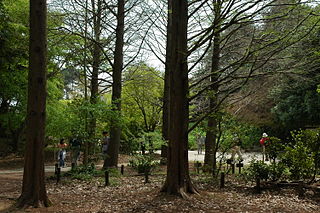
The Kobe Municipal Arboretum , also known as the Kobe City Forest Botanical Garden, is a 142.6-hectare botanical garden and arboretum located near Mount Maya at 4-1 Nakaichiri-yama, Shimotanigami, Yamada-cho, Kita-ku, Kobe, Japan. It is operated by the city and open daily except Wednesdays; an admission fee is charged.
49. Mt. Okko
Mt. Okko-san is a 241.2-meter-high mountain located in Shinde-cho, Nishi-ku, Kobe, Hyogo Prefecture, Japan. An independent peak on the ground of Higashiharidai. It faces Mt. Meoka, 2 km to the west, and both have been selected as one of the 100 mountains in Hyogo. It is a watershed between the Kako River system and the Akashi River system.
50. 河内国魂神社
Kawachi Kuni Soul Shrine (Kawachi Kuni Tamajinja / Kawachi no Kuni Tamajinja, Kawachi Kuni Soul Shrine) is a shrine located in Kunitamadori, Nada-ku, Kobe, Hyogo Prefecture, Japan. It is a Shikiuchi company, and the former company name is Gosha. Originally, it was called "Gogeten God" and "Gogeten Shrine".
51. 能福寺
Nōfuku-ji (能福寺) is a Buddhist temple that, from the legend, was founded in 805 by the monk Saichō, in Kita Sakasegawa, Hyōgo-ku, Kobe, Hyōgo Prefecture, Japan. Saichō placed a statue of Yakushi Nyorai of his own making in the temple hall and named the temple Nōfuku Gokoku Mitsu-ji (能福護国密寺).
52. Sorakuen Garden
The gardens of Sōraku-en (相楽園) are in Chūō-ku, Kobe, Japan. Formerly attached to the Taishō-era residence of Kodera Yasujirō, ownership passed to the city of Kobe in 1941. Since then they have been open to the public. Most of the former residence was destroyed in the Pacific War; the stables of 1907 survived and have been designated an Important Cultural Property.
53. 出雲大社神戸分祠
Izumo Taisha Kobe Branch Shrine is a shrine located in the urban area of Kobe, Kusunoki-cho, Chuo-ku, Kobe City, Hyogo Prefecture. He is known as the "God of Marriage," "the God of Fortune," and the "God of the Ghost." Enshrine the spirit of Izumo Taisha's shrine deity, the Lord of the Kingdom. Also known as "Izumo-san in Kobe"
54. 菊水山
Kikusui Mountain is located in the Kita Ward of Kobe City, Hyogo Prefecture. It belongs to the Rokko Mountain Range, which is designated as part of the Setonaikai National Park. It has been selected as one of the 100 mountains of hometown Hyogo.
55. Goshikizuka ancient tomb
The Goshikizuka Kofun (五色塚古墳) is a kofun burial mound located in the Goshikiyama neighborhood of Tarumi-ku, Kobe, Hyōgo Prefecture, in the Kansai region of Japan. The tumulus is the largest in Hyōgo Prefecture, and is estimated to have been built around the end of the 4th century and the beginning of the 5th century. It is known as the first kofun to be restored to what archaeologists believe to be its original appearance. It is also known as the Sentsubo Kofun (千壺古墳). Together with the smaller neighboring Kotsubo Kofun (小壺古墳) it was designated a National Historic Site in 1921, with the area under protection extended in 1974, 1979 and 2006.
56. 香雪美術館
The Kōsetsu Museum of Art is an art museum that opened in Kobe, Hyōgo Prefecture, Japan in 1973. The museum preserves, researches, and displays the collection of Japanese and East Asian artworks—including Buddhist art, calligraphic works, tea utensils, early-modern paintings, arms and armour, and lacquerware—built up by Murayama Ryōhei, also known as Kōsetsu, founder of The Asahi Shimbun. These works include nineteen Important Cultural Properties and twenty-three Important Works of Fine Arts. In December 2021, the museum closed for an extended period of renovation, although exhibition activities continue through the Nakanoshima Kōsetsu Museum of Art in Osaka.
Share
Disclaimer Please be aware of your surroundings and do not enter private property. We are not liable for any damages that occur during the tours.
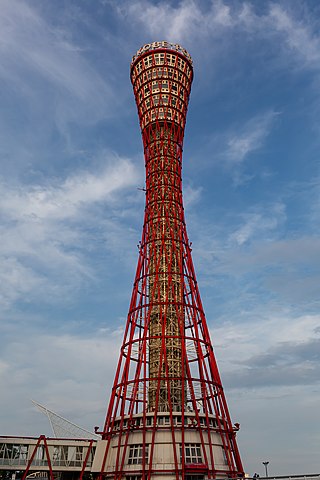



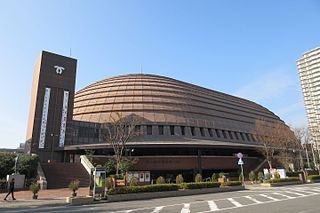
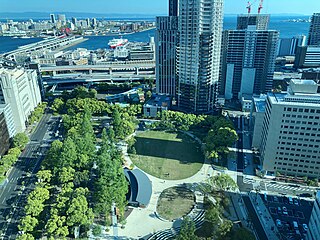
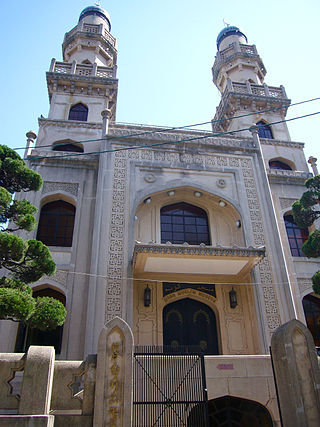
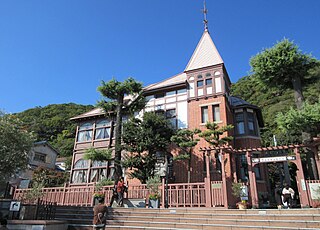
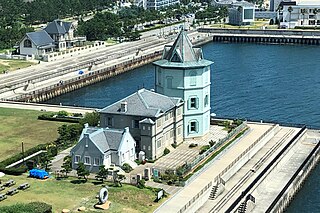
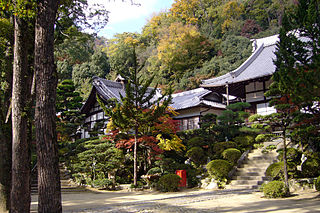
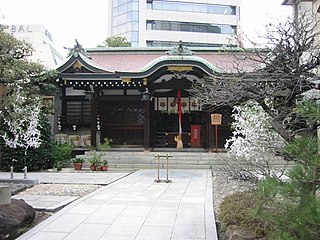
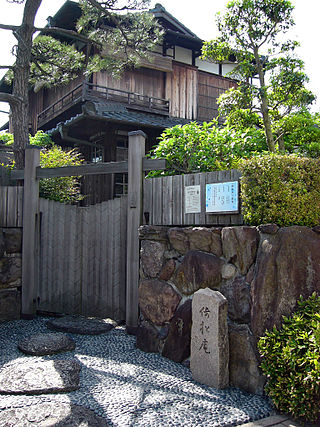

.jpg)
